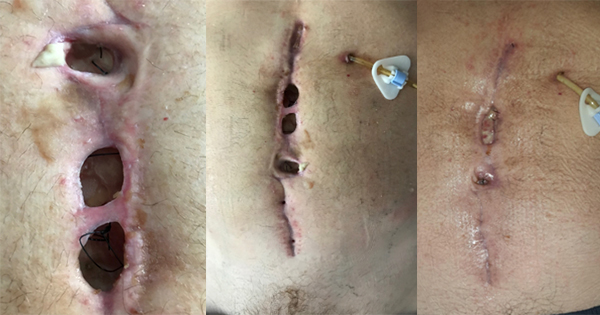Laparotomy wound dehiscence has high morbidity and mortality rates. Surgeons and wound care nurses use different methods to facilitate wound healing with one of the most common methods being primary closure. The authors present their experience of using tailor-made, skin-stretch devices to manage laparotomy wound dehiscence and control evisceration. The three cases reported in this article were chosen because primary closure was not appropriate. All three achieved successful wound closure within 1415 weeks of implementation of the tailor-made, short-stretch device without using another alternative closure methods. At 1-year follow-up, all had acceptable scarring and incisional hernia was not identified. It was concluded that the tailor-made, skin-stretch device was a cost-effective, highly versatile, reliable, and non-invasive alternative in the management of laparotomy wound dehiscence and evisceration.






